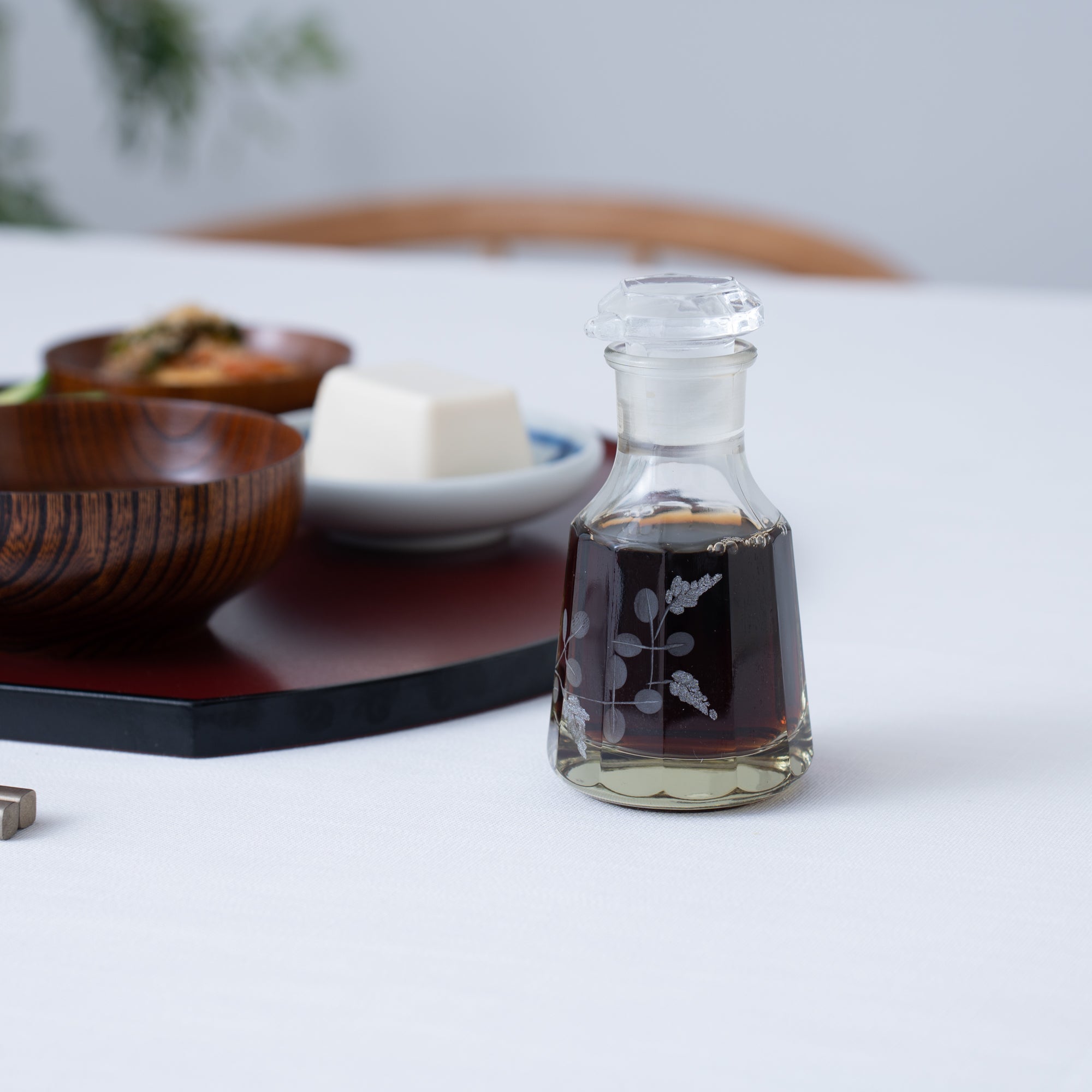
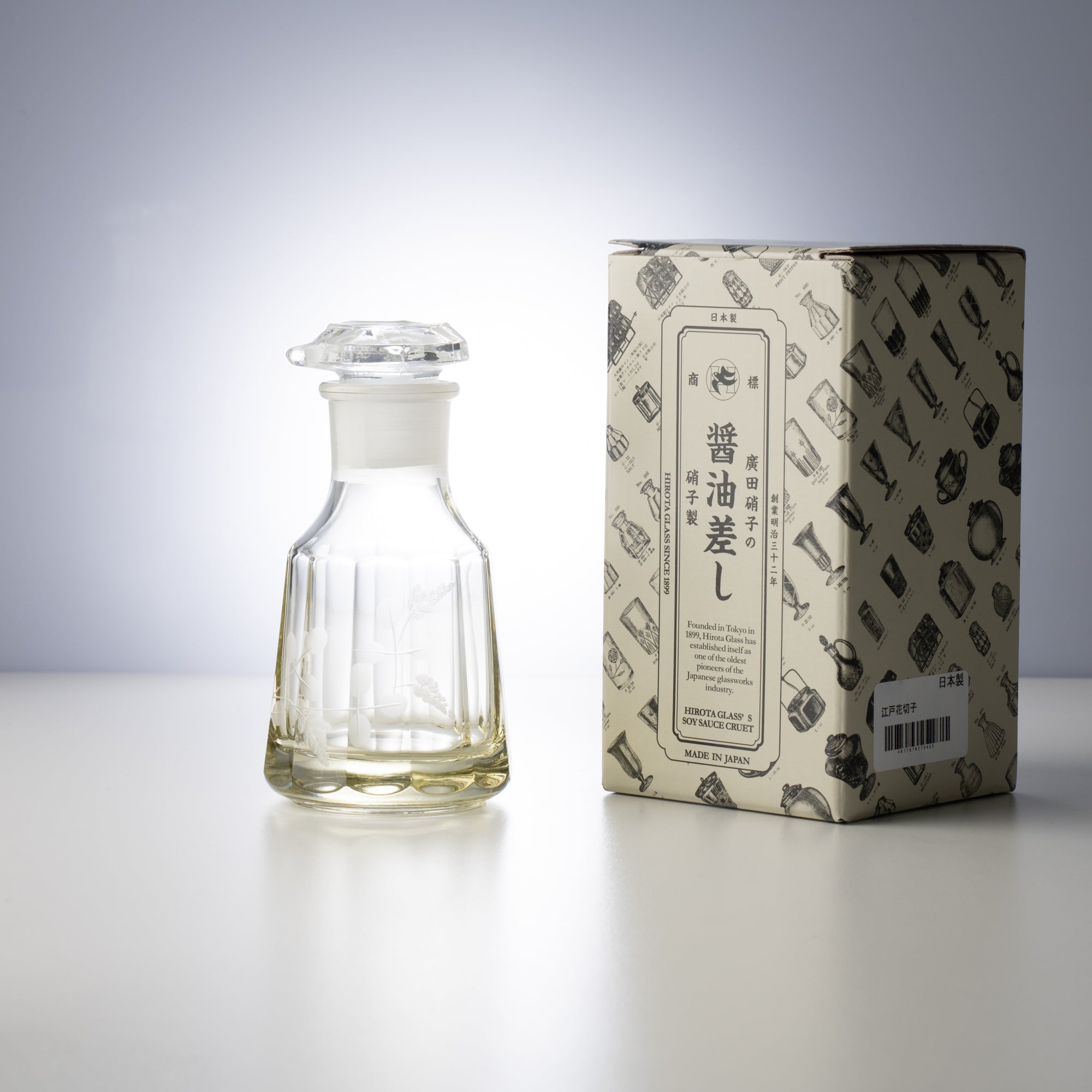
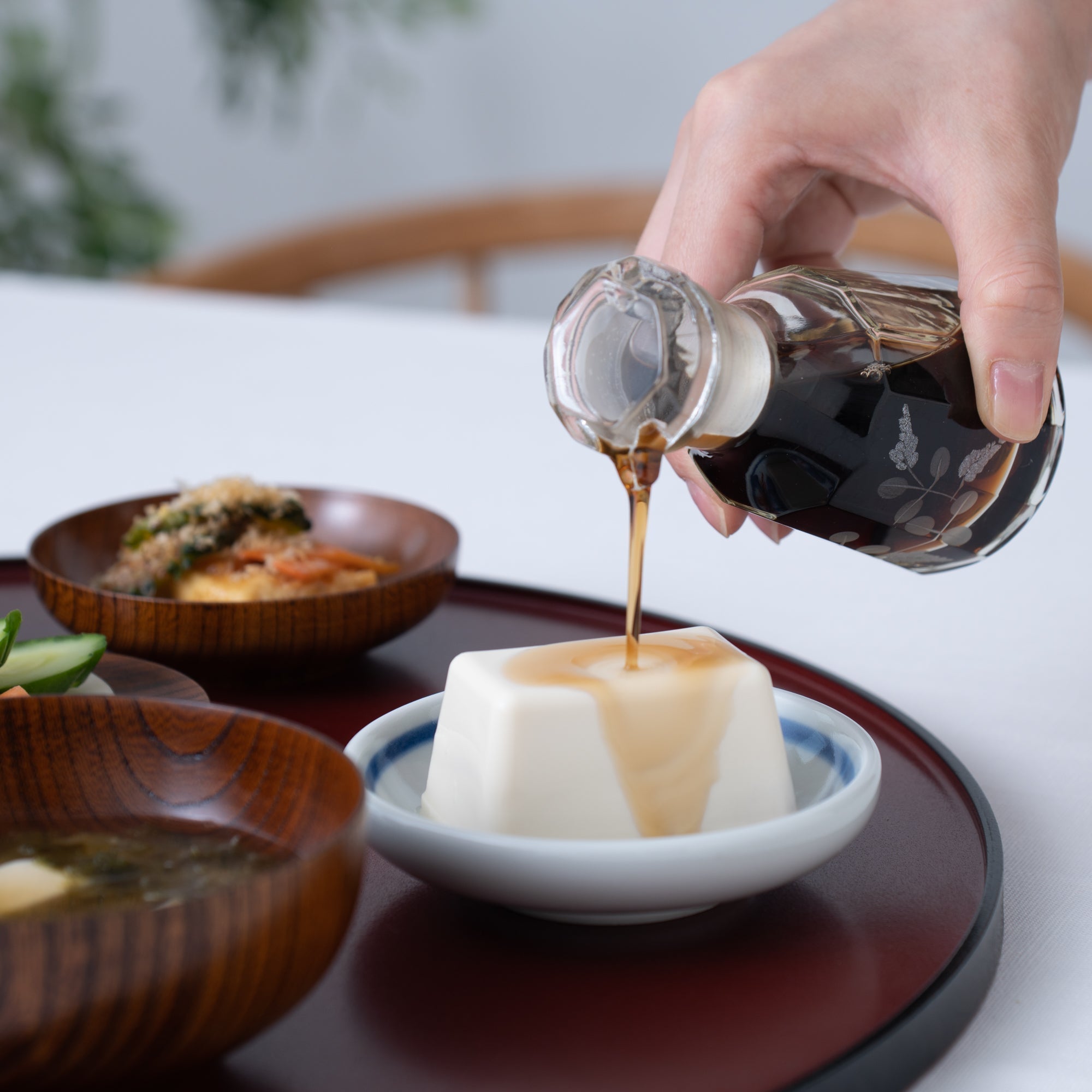
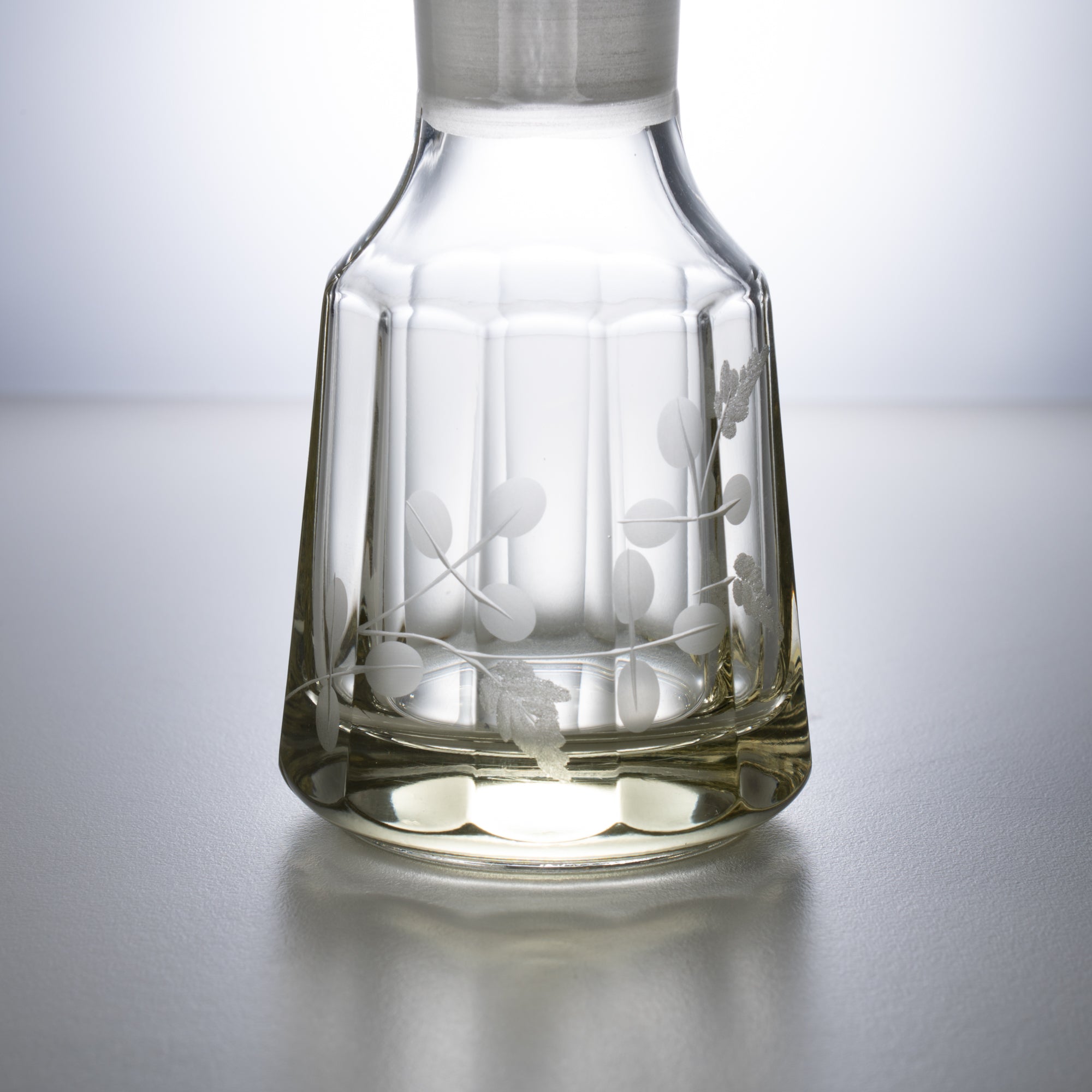
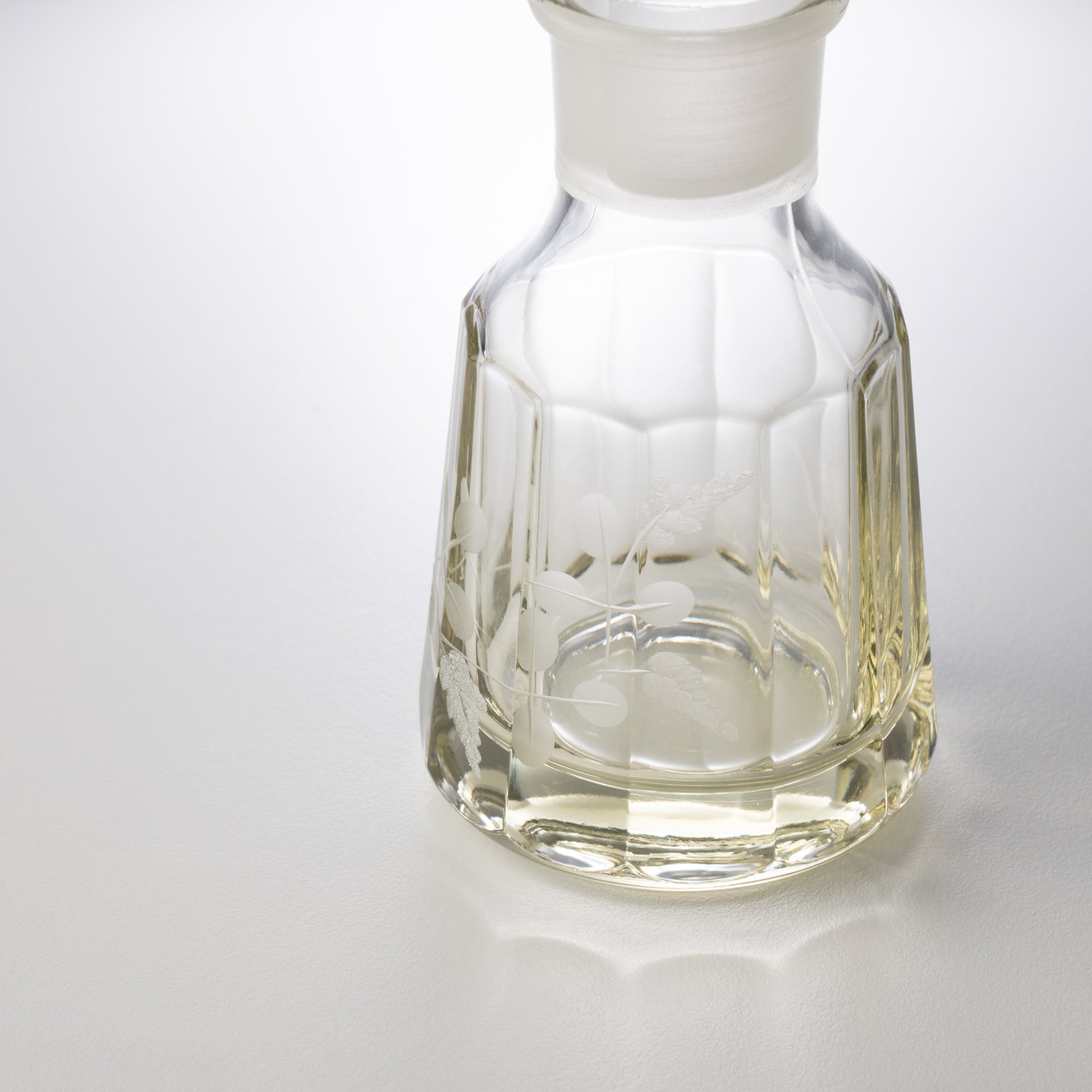
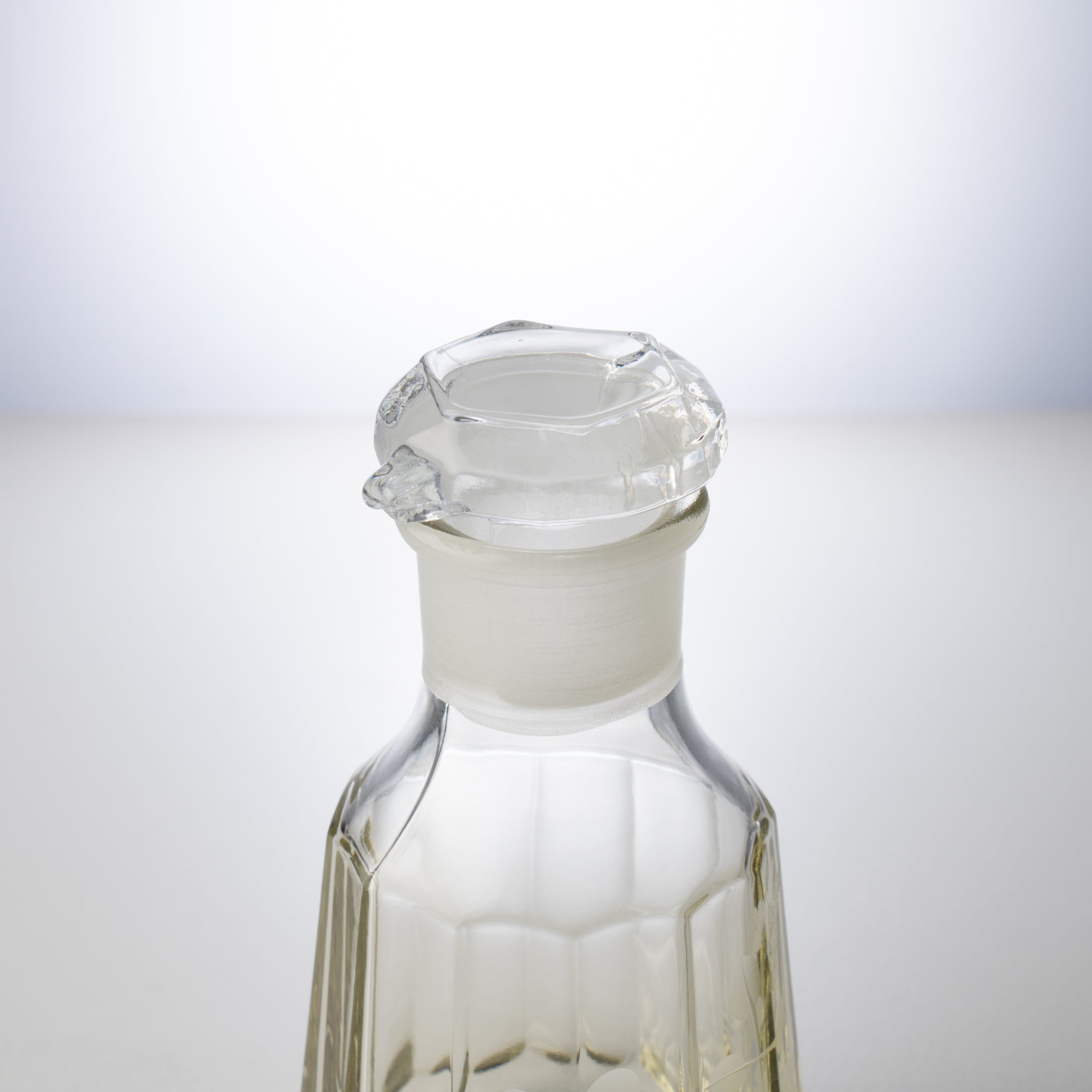
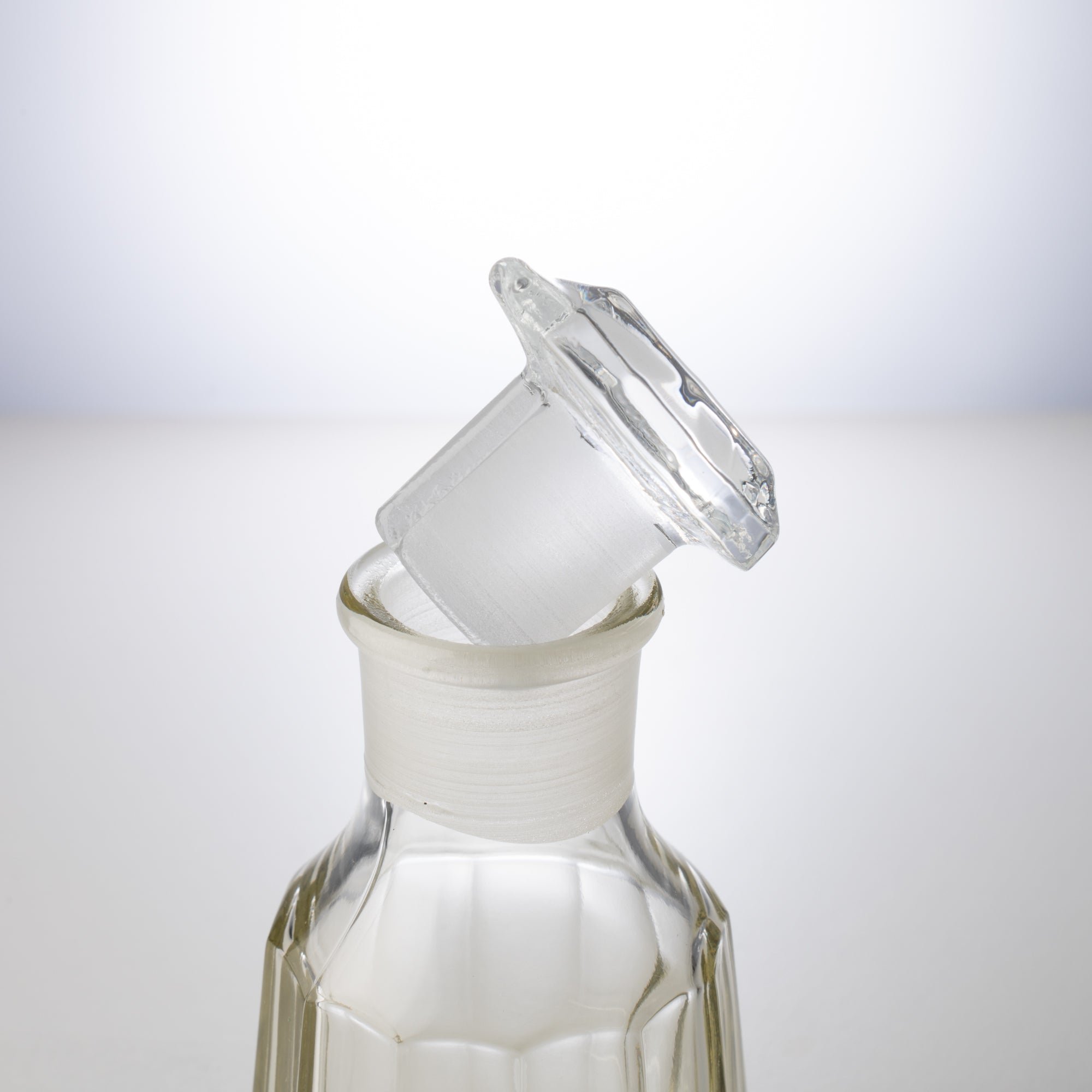
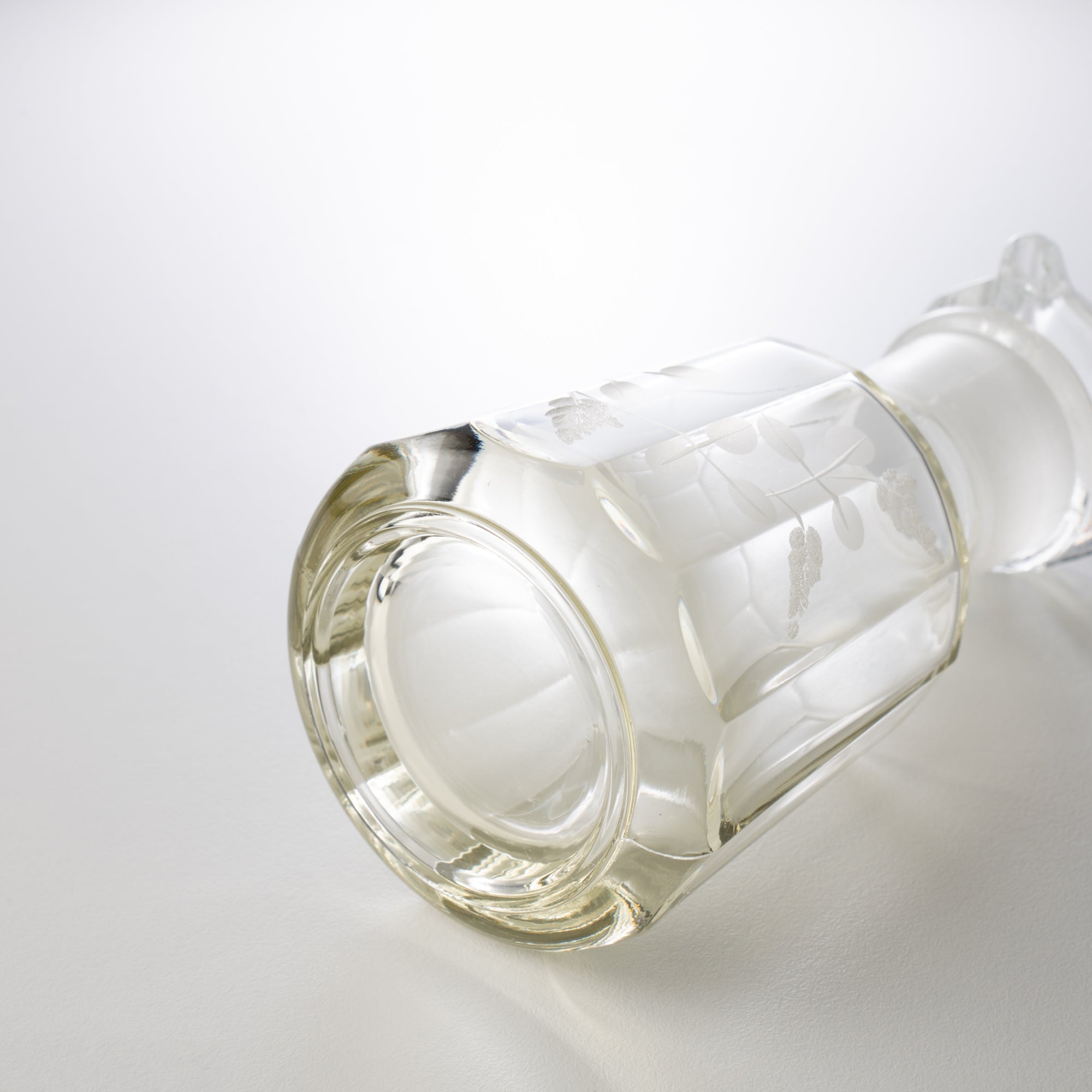
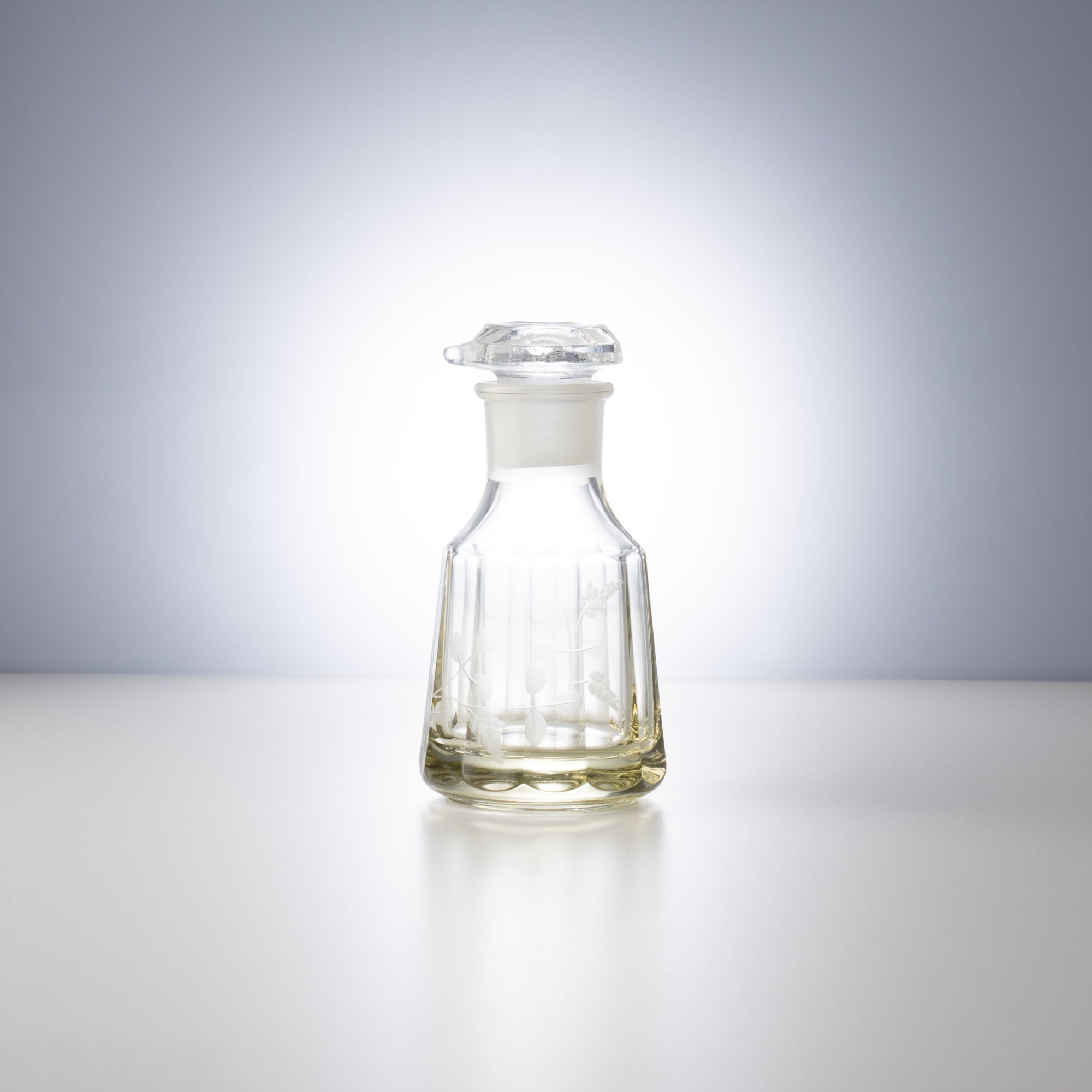
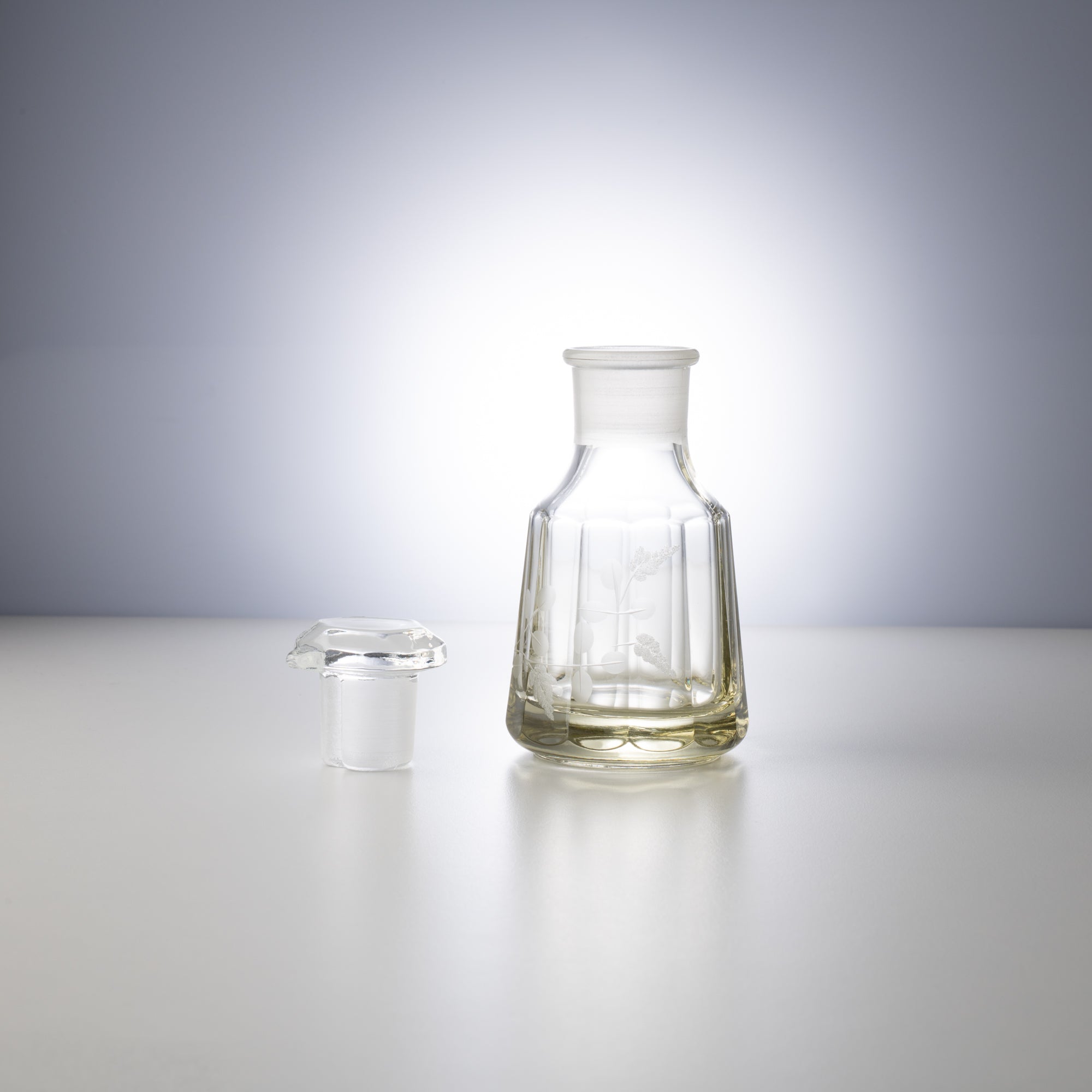
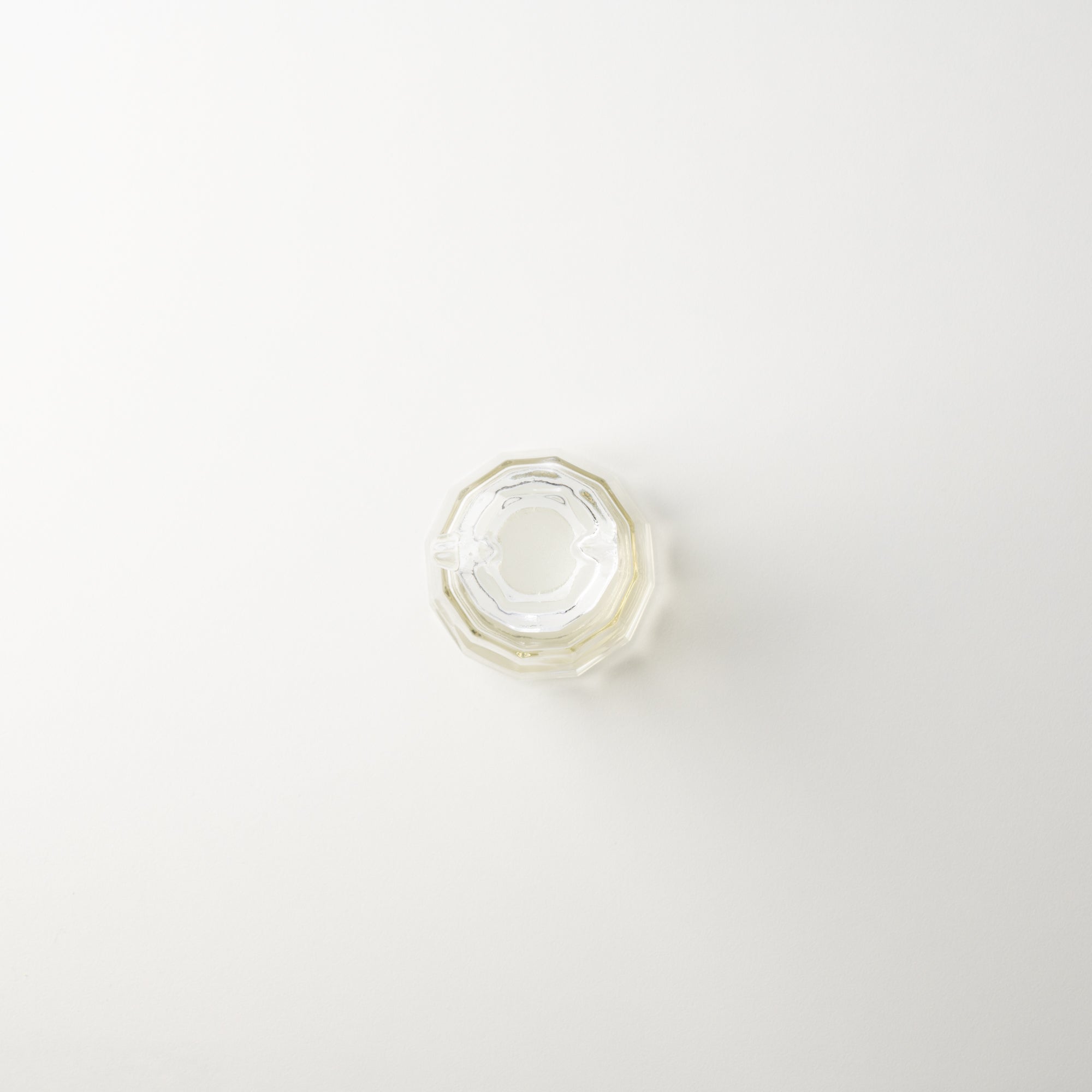
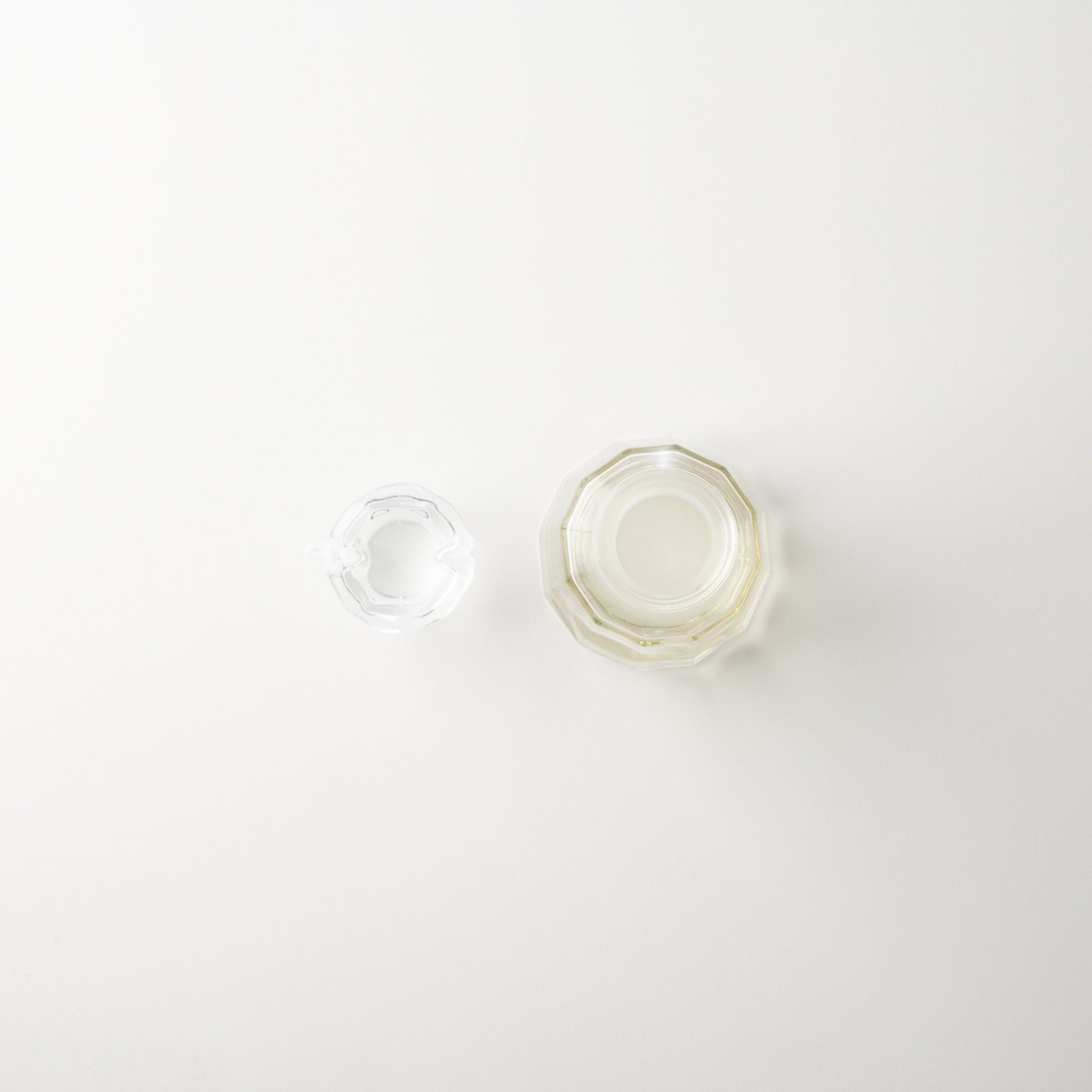
Autumn Hagi Edo Kiriko Cut Glass Soy Sauce Dispenser
Estimated Shipping Widget will be displayed here!
Because of its beauty, the Hagi ("Japanese bush clover") flower has long been loved by the Japanese as one of the "Seven Herbs of Autumn". In autumn, the Hagi bears many small red flowers on thin, weeping branches.
Its subdued but limber appearance is said to have given rise to the words "thoughtful," "shy," "soft-hearted," and "soft-spirited".
Each piece is cut by hand by a craftsman. This soy sauce dispenser on the table gently soothes you with the beautiful four seasons of Japan.
An ancient color with a slight yellow tinge and the delicately faceted Kiriko design create a beautiful flower when the soy sauce is poured in.
Hirota Glass was the first company to produce the glass soy sauce dispensers with the frosted glass joint that are now the standard. Hirota Glass's soy sauce dispensers are not only beautiful, but also easy to use and have a reputation for not leaking or dipping, making them long sellers.
This piece is a perfect gift or for home use.
Hirota Glass is one of the oldest glass makers in Tokyo, founded in 1899. Based on the data of designs handed down to the company since its foundation, Hirota Glass has continued to produce a series of products that harmonize with contemporary home décor, while inheriting the traditional techniques of Japanese glassblowing and Edo Kiriko.
PRODUCT DETAIL
- Quantity: 1
- Dimension: D6cm(2.4in)×H11.3cm(4.4in)
- Capacity: 100ml(3.4oz)
- Origin: Made in Japan
- Brand: Hirota Glass
![]()
DETAIL
| Quantity | 1 |
| Size | D 6cm(2.4in) × H 11.3cm(4.4in) |
| Capacity | 100ml(3.4oz) |
| Material | Glass |
| Package Type | Paper box |
| Microwave | No |
| Dishwasher | No |
Maker / Brand
When Hirota Glass was founded, Japan was in the Meiji Era (1868 CE–1912 CE), a time marked by the Industrial Revolution and increasing Westernization of the townscapes.
During this era, Japanese and Western arts, crafts, architecture, and designs began to blend. By the Taisho Era (1912 CE–1926 CE), this fusion gave rise to "Taisho Romanticism," a unique aesthetic style of the time.
In 2002, Hirota Tatsuo, the third director of Hirota Glass, began reviving the classic glassware styles popular during the Taisho Era. Today, the exotic charm of Taisho Romanticism continues to be reflected in Hirota Glass's creations.
Origin
Tokyo, the capital of Japan, is also a center of craftsmanship. Among them, Edo Glass and Edo Kiriko are traditional Japanese Glassware that have been handed down for about 200 years in Edo City, the old name for the central area of Tokyo.
These beautifully shining glasswares have been refined in Japan's largest consumer city, carrying on the good old Japanese tradition into the modern age.
Choose options












Estimated Shipping Widget will be displayed here!
Soy Sauce Dispensers
Soy sauce is an essential part of Japanese cuisine, so why not present this condiment elegantly on your dinner table by choosing one of MUSUBI KILN's soy sauce dispensers? Whether you prefer porcelain or glass, you'll find designs that perfectly blend functionality with beauty.
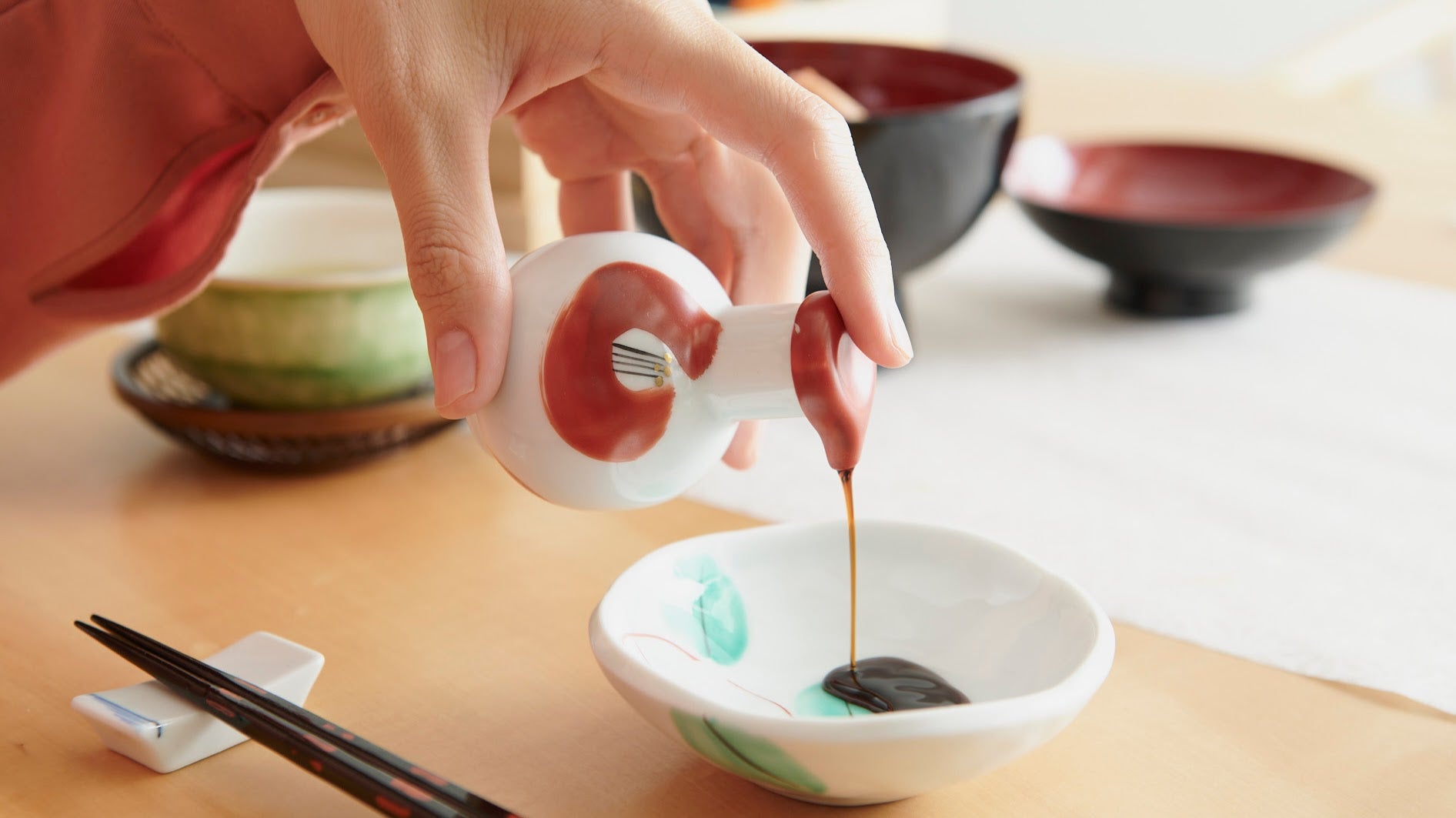
Possessing the Light, Edo Kiriko Glassware

The Best Menu Dinner with Luxurious Lacquerware

International Shipping
Multiple shipping options available, with discounted shipping for orders over 500000 and free shipping over 5000000.
Insured shipping service
Full compensation for any accidental damage that may occur during transit.
Made by Japanese craftsmen
Fair prices plus free furoshiki wrapping with every order.

